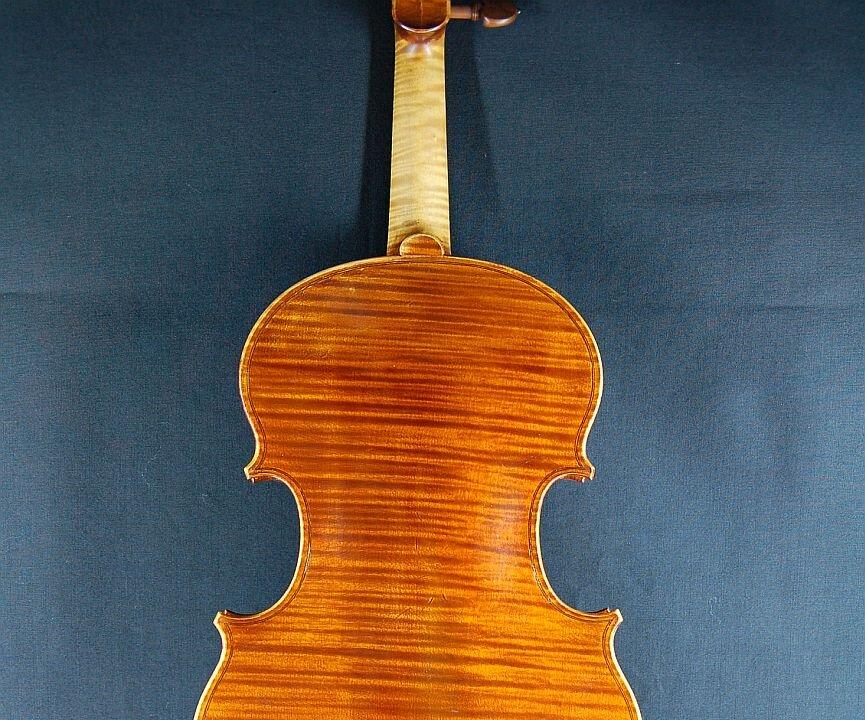NEW YORK—New York has become a new center for the prestigious Mondomusica show. It features 164 exhibitors from 14 countries and is also held yearly in Cremona, Italy—the birthplace of the Cremonese violin-making masters.
The huge trade show featured stringed instruments and bows from around the world. Attendees to the April 10–12 show were allowed to purchase accessories and instruments as well as attend lectures and featured concerts.
The thought of Cremona conjures up such illustrious figures as Stradivari,Bergonzi, the Guarneri family, and the Amati family living 300 to 500 years ago. We think of luthiers hunched over, amber varnish sparkling, and knives ready to whittle a most perfect bridge.
In the music world these images have been a cliche for many years: The great Italian sound, the Stradivari sound, the Guarneri sound. Ah—the secret of the Italian sound in the varnish, the wood, and the resins.
The instruments of old master Italians are naturally objects of art appealing to the eyes and the ears. Their makers worked under tutelage of other great makers, some the founding fathers of violin- and viola-making school of Gasparo da Salò (1542–1609) from Brescia, as well as Andrea Amati of the Cremonese School (1505–1577). Both laid the bedrock upon which modern makers build.
There is an assumption that one can always tell the great Italian sound. Most of these stories are untrue. A great modern instrument can often outplay a tired, old stringed instrument in need of restoration.
I am sorry to dispel fables but for years and years tests have fooled blindfolded professionals, connoisseurs, trying to discern a new instrument from an old one.
Old instruments were once new, and the oldest makers once tried new things.The greatest string instrument makers perfected their craft through experimentation.
Antonio Stradivari tried a flatter arching on the violin than the norm, and it was really not until he worked on his own that he was able to test its acoustic virtues, namely its sound projection in larger halls.
The greatest of the great instruments are still wonderful, but it is so important not to underestimate fine newer instruments and that is what this wonderful show brings to the forefront.
Great Luthiers Today
This show beautifully illustrated modern artistry and craftsmanship. It also assured one that it needn’t cost a fortune to have a beautiful instrument. The high price comes from the rarity and antique value rather than intrinsic sound. As such, I was at once impressed by two makers.
A violin made by the young Italian violin maker Allesandro Commendulli sat antiqued in the style of one of the aforementioned masters of centuries before. When I put a bow on the strings, it seemed to crackle to life without the stuffy sound of old violins in need of restoration.
Many would be fooled by this lovely instrument. Many young aspiring violinists would find it a wonderful asset.
As I ventured further into the exhibit I came upon the violas of Fredrich Alber a German-born maker who moved to Montpellier, France years ago.
Trying his two violas was a breath of fresh air. They were at once responsive and excellent sounding instruments. Artistically they were very attractive and obviously created by a man who has immersed himself in this beautiful world. It also helped that he is a player of violin and viola and continues to play chamber music.
I was amazed by the variety of instruments and astounded by their quality.
Perhaps our world is overcrowded with so many makers—too much information out there, too many opinions, distractions, contests that can never hope to bring out the best. Yet all in all the exhibit provided an amazing display of beautiful stringed instruments and bows from many different countries.
The bottom line is there is a world of beauty being created, satisfying auditory and visual beauty indeed.
The terrific work of the organizers must not be forgotten. The show was a real treat and credit should go to organizers Claire Stefani, Susan Carmichael, and Elizabeth Marshall.





